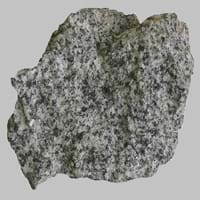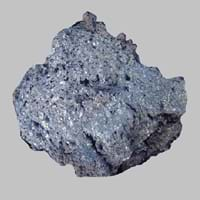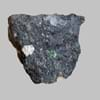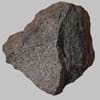Definition
Diorite is a grey to dark-grey intermediate intrusive igneous rock composed principally of plagioclase feldspar,biotite, hornblende, and pyroxene
Picrite is a variety of high-magnesium olivine basalt that is very rich in the mineral olivine
Origin
Unknown
Hawaii Islands
Discoverer
Unknown
Unknown
Etymology
From early 19th century coined in French, formed irregularly from Greek diorizein distinguish
From Greek pikros bitter + -ite, 19th century
Class
Igneous Rocks
Igneous Rocks
Sub-Class
Durable Rock, Hard Rock
Durable Rock, Hard Rock
Other Categories
Coarse Grained Rock, Medium Grained Rock, Opaque Rock
Fine Grained Rock, Opaque Rock
Texture
Phaneritic
Earthy, Rough
Color
Black, Brown, Light to Dark Grey, White
Black, Brown, Colourless, Green, Grey, Pink, White, Yellow
Durability
Durable
Durable
Appearance
Shiny
Rough and Shiny
Interior Uses
Decorative Aggregates, Interior Decoration
Countertops, Decorative Aggregates, Homes, Interior Decoration
Exterior Uses
As Building Stone, As Facing Stone, Garden Decoration
As Building Stone, As Facing Stone, Garden Decoration, Paving Stone
Other Architectural Uses
Curbing
Curbing
Construction Industry
As Dimension Stone, Cement Manufacture, Cobblestones, Construction Aggregate, for Road Aggregate
As a Sintering Agent in Steel Industry to process Iron Ore, Cement Manufacture, for Road Aggregate, Manufacture of Magnesium and Dolomite Refractories, Roadstone, Used for flooring, stair treads, borders and window sills.
Medical Industry
Not Yet Used
Not Yet Used
Antiquity Uses
Artifacts, Monuments, Sculpture, Small Figurines
Artifacts, Monuments, Sculpture
Commercial Uses
Creating Artwork, Curling
As a Feed Additive for Livestock, As armour rock for sea walls, Metallurgical Flux, Pottery, Source of Magnesia (MgO)
Types
Not Available
Oceanite
Features
Typically speckled black and white.
Host Rock for Lead
Archaeological Significance
Famous Monuments
Data Not Available
Data Not Available
Famous Sculptures
Data Not Available
Data Not Available
Pictographs
Not Used
Not Used
Petroglyphs
Not Used
Not Used
Formation
Diorite is a coarse-grained intrusive igneous rock which contains large interlocking and randomly oriented crystals and forms when molten lava does not reach the Earth’s surface and cools down in the Earth’s crust.
Picrite is a fine-grained, hard rock which is a type of metasomatite, essentially altered basalt. It forms with or without crystallization, either below the surface as intrusive rocks or on the surface as extrusive rocks.
Mineral Content
Albite, Amphibole, Apatite, Biotite, Feldspar, Hornblade, Ilmenite, Magnetite, Muscovite or Illite, Olivine, Plagioclase, Pyroxene, Quartz, Sulfides, Titanite, Zircon
Biotite, Olivine, Plagioclase, Pyrrhotite
Compound Content
Silicon Dioxide
Al, CaO, Carbon Dioxide, Mg, MgO
Types of Metamorphism
Cataclastic Metamorphism, Contact Metamorphism, Regional Metamorphism
Burial Metamorphism, Cataclastic Metamorphism, Impact Metamorphism, Regional Metamorphism
Types of Weathering
Biological Weathering, Chemical Weathering, Mechanical Weathering
Biological Weathering
Types of Erosion
Chemical Erosion, Coastal Erosion, Water Erosion
Chemical Erosion, Coastal Erosion, Glacier Erosion, Sea Erosion, Water Erosion, Wind Erosion
Grain Size
Medium to Coarse Grained
Fine Grained
Fracture
Not Available
Uneven
Streak
Bluish Black
White, Greenish White or Grey
Porosity
Very Less Porous
Less Porous
Luster
Shiny
Subvitreous to Dull
Cleavage
Not Available
Imperfect
Specific Gravity
2.8-3
2.75-2.92
Transparency
Opaque
Opaque
Density
2.8-3 g/cm3
1.5-2.5 g/cm3
Specific Heat Capacity
Not Available
Resistance
Heat Resistant, Pressure Resistant, Wear Resistant
Heat Resistant
Deposits in Eastern Continents
Asia
Not Yet Found
India, Russia
Africa
Egypt
South Africa
Europe
Finland, Germany, Italy, Romania, Sweden, Turkey, United Kingdom
Iceland
Others
Not Yet Found
Not Yet Found
Deposits in Western Continents
North America
USA
Canada, USA
South America
Argentina, Bolivia, Chile, Colombia, Ecuador, Peru
Brazil
Deposits in Oceania Continent
Australia
New Zealand, Western Australia
Not Yet Found
All about Diorite and Picrite Properties
Know all about Diorite and Picrite properties here. All properties of rocks are important as they define the type of rock and its application. Diorite and Picrite belong to Igneous Rocks.Texture of Diorite is Phaneritic whereas that of Picrite is Earthy, Rough. Diorite appears Shiny and Picrite appears Rough and Shiny. The luster of Diorite is shiny while that of Picrite is subvitreous to dull. Diorite is available in black, brown, light to dark grey, white colors whereas Picrite is available in black, brown, colourless, green, grey, pink, white, yellow colors. The commercial uses of Diorite are creating artwork, curling and that of Picrite are as a feed additive for livestock, as armour rock for sea walls, metallurgical flux, pottery, source of magnesia (mgo).










